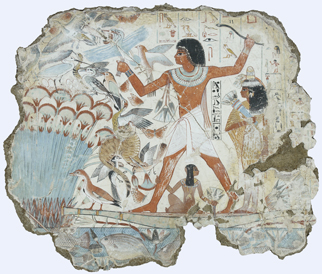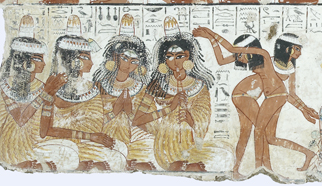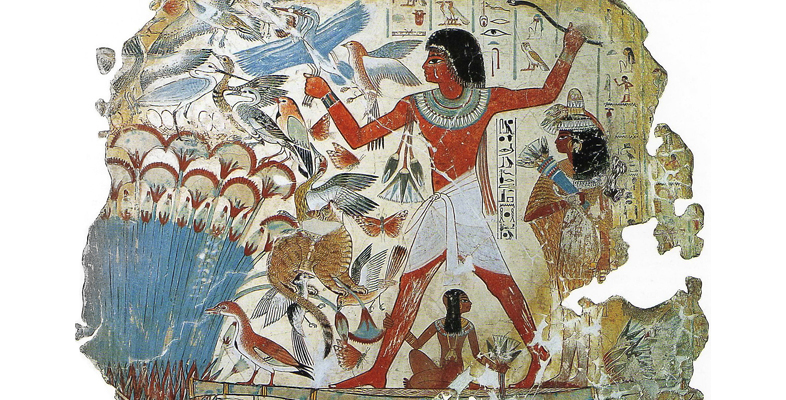4 Beginning to decode Egyptian art
We need, then, to look at Egyptian paintings in a ‘dual’ way. We need to see them as representations of physical things, but we also need to grasp their symbolic dimension. We need to be able to see through their surface, as it were to decode them, to resist simply regarding them with twenty-first-century eyes.
Yet this is not purely about learning to read the signs of the Egyptians’ orientation to the afterlife; there are some Egyptian paintings which, if we learn how to look at them, and ask the right questions about what they are telling us, can reveal a world that is full of life and activity, of work and leisure, of the many small things that make up lived experience – thereby bringing the daily life of ancient Egypt closer to us. Among the most remarkable of these are paintings from the tomb–chapel of a Theban official Nebamun, painted over three thousand years ago, in about 1350 BC (Figure 7).

Revealing ancient life
Later we will look at the Nebamun paintings in detail. For now, see if you can begin to discover any insights into ancient life from this part of ‘The banquet’ fragment shown in Figure 8.

What is this a picture of?
It is a picture of musicians and dancers.
How is it painted?
It is quite ‘painterly’. That is to say, it is painted relatively informally, preserving some of the qualities of a sketch. This helps the viewer get a sense of the ‘activity’ of the scene: the flute-player’s hair swaying in time to the music, and the dancers’ sinuous movements.
